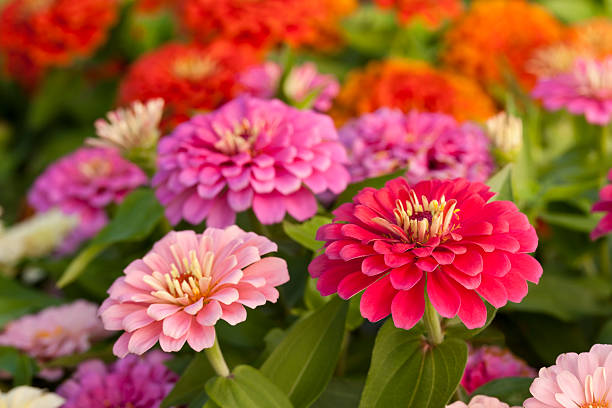Physical Address
304 North Cardinal St.
Dorchester Center, MA 02124
Physical Address
304 North Cardinal St.
Dorchester Center, MA 02124

Every plant has a specific time within which it completes its life cycle—the time from which the plant starts to germinate to the production of seeds to be ready for harvest and then dies.
This is referred to as the plant’s life cycle.

Flowering plants can be classified based on their life cycle as annuals or perennials.
Annual flowers complete their life cycle within one year or, even less, of planting.

They have a seed-to-seed life cycle. Annual flowers planted in summer germinate and then mature in the autumn of the same year, and vice versa.
Though this may vary according to different geographical areas, however, botanically speaking, you plant an annual flower this year and have its harvest this same year as well.
Annual flowering plants usually produce few leaves but numerous flowers that can add magic to the landscape of your garden. The flowers of annuals are usually brilliantly bright with a sweet scent that easily attracts pollinating insects into your garden.
Annual plants can be grouped into two types: summer annuals and winter annuals.
Summer annual plants germinate and complete their life cycles from the spring or summer of the growing year to the autumn of the same year. Summer annuals grow during the warmer season.

Simply put, after you sow your plant’s seed, summer annuals sprout, grow, flower, produce seed, and die all during and around summer. Summer annuals include Zinniah, Sunflower, Dahlia, Marigolds, Gloriosa Daisy, Peony, and others.

Winter annuals have different names: cool-season annuals, hardy annuals, and frost-tolerant annuals. Winter annual plants germinate and complete their life cycles from the autumn of the planting year to the spring or summer of the following year.

The sprouting, growing, flowering, and seeding occur during and around winter. Examples of winter annuals are pansy, Sweet Pea (Lathyrus odoratus), Primerose, Sweet Alyssum (Lobularia maritima), and Snapdragon (Antirrhinum majus), and so on.
Read More:
Perennials, on the other hand, complete their life cycle and live for more than two growing seasons.
Perennial flowers that are sown in summer and then left to germinate and grow, die in autumn, returning in the next summer from the rootstock or other structure, and do this for more than two growing seasons.

Planting perennials usually requires less labour. Once perennials are planted, they continue to regerminate every year from the structure that survives the winter. Perennials have a shorter blooming period and are usually not very attractive.
Perennials have a vigorous root system which enables them to survive winter weather and regrow during each growing season.
Another classification of flowering plants based on their life span is the biennial.
Some flowering plants only complete their life cycle within just two years of the planting season. These are the biennials.
There are differences between these flowering classes based on life span. I’ll highlight these differences below for you to know the best plants you can choose for particular growing seasons and for what purpose you want them to serve.
Check this also:
There are numerous differences between annuals and perennials. However, the major difference is that annuals take a year or less to complete their life cycles annuals take a short period to grow, germinate, flower, seed, and die while perennials complete their life cycles for two or more years of planting season. Thus, the annuals have a shorter growing span compared to the perennials, which have a longer life span.
Annuals germinate, flower, and produce seed within one growing season, with a longer flowering period. You can choose annuals to give your indoor and garden a stunning look of flowers and enjoy your view when you sit on your balcony.
If you’re a gardener that loves flowers but has little time to daily water, weed, and carry out other maintenance labor, go for perennials. Perennials have a stronger root system than annuals, allowing them to access water on their own.
As a gardener who practices nursery mostly in his garden, you should go for annuals. Annuals can survive well in pots and flower rapidly. This may not be the case for perennials. Even though perennials require less maintenance, they need to be planted in a field where the roots can easily sort for water on their own.
If you’re a gardener with an admiration for colorful, bright, dextrous, and flamboyant flowers, do go for annual flowering plants. Only annuals can work the magic on your farm. Perennials can do it too, but annuals are the best for this purpose.
Do you love trees and shrubs under which you can sit and enjoy your novel with a cup of coffee beside you? Yea, I love that, too! You know what? Go for perennials! Perennials are trees that can provide shade for you when it’s sunny in your garden or compound.
Knowing the differences between annual and perennial flowering plants allows you to choose which plant to have in your garden during each growing season. You may choose based on the differences I’ve highlighted above.
Please provide feedback, free free to add to the list.